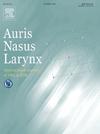Tonsil-induced autoimmune/inflammatory syndrome: Current insights into the pathogenic role of tonsils in immunoglobulin a nephropathy, palmoplantar pustulosis and psoriasis
IF 1.5
4区 医学
Q2 OTORHINOLARYNGOLOGY
引用次数: 0
Abstract
The tonsils, specifically the palatine tonsils, serve as a first line of defense against pathogenic microorganisms that enter the nasal or oral cavity. They release antigen-specific immune cells and antibodies that circulate not only in the upper respiratory tract but also throughout the rest of the body. Numerous clinical studies, including randomized prospective trials, have shown that tonsillectomy is highly effective in treating immunoglobulin A nephropathy (IgAN), palmoplantar pustulosis (PPP), and psoriasis. However, the precise pathogenic association of the tonsils with these diseases remains incompletely understood. The author previously proposed the concept of tonsil-induced autoimmune/inflammatory syndrome (TIAS) as a common underlying mechanism for these diseases. TIAS suggests that an excessive immune response initiated by the tonsils, often triggered by common bacteria such as α- and β-hemolytic streptococcus and Haemophilus parainfluenzae, which are indigenously present in the oral cavity, can become dysregulated. This immune response also involves unmethylated DNA sequences (CpG-ODN) that are shared among various bacteria. In reaction to these bacteria or CpG-ODN, tonsillar T-cell populations, including type 17 helper T (Th17), Th22, Th1, and cytotoxic T cells, become proliferative. Simultaneously, tonsillar B-cell populations responding to these triggers produce antibodies against epidermal keratins and heat shock proteins, or aberrant IgA1. These tonsillar T-cell populations and the antibodies then enter the systemic circulation, migrating to the kidneys or skin. Upon reaching the organs, they contribute to tissue damage, aided by various cytokine actions. IgAN, PPP, and psoriasis, which are representative disorders of TIAS, all share this common pathogenic mechanism. In this article, the author discusses the pathogenesis of TIAS based on recent research findings.
扁桃体诱导的自身免疫/炎症综合征:扁桃体在免疫球蛋白a肾病、掌足底脓疱病和牛皮癣中的致病作用的最新见解
扁桃体,特别是腭扁桃体,是抵御进入鼻腔或口腔的病原微生物的第一道防线。它们释放抗原特异性免疫细胞和抗体,不仅在上呼吸道循环,而且在身体其他部位循环。包括随机前瞻性试验在内的大量临床研究表明,扁桃体切除术对治疗免疫球蛋白A肾病(IgAN)、掌足底脓疱病(PPP)和牛皮癣非常有效。然而,扁桃体与这些疾病的确切致病关系仍不完全清楚。作者先前提出扁桃体诱导的自身免疫/炎症综合征(TIAS)是这些疾病的共同潜在机制。TIAS提示,扁桃体引发的过度免疫反应,通常是由口腔中固有的常见细菌(如α-和β-溶血性链球菌和副流感嗜血杆菌)引发的,可能会变得失调。这种免疫反应还涉及各种细菌共享的未甲基化DNA序列(CpG-ODN)。在对这些细菌或CpG-ODN的反应中,扁桃体T细胞群,包括17型辅助性T细胞(Th17)、Th22、Th1和细胞毒性T细胞,变得增殖。同时,扁桃体b细胞群对这些触发反应产生针对表皮角蛋白和热休克蛋白或异常IgA1的抗体。这些扁桃体t细胞群和抗体随后进入体循环,迁移到肾脏或皮肤。在到达器官后,它们在各种细胞因子的作用下导致组织损伤。IgAN、PPP和牛皮癣作为TIAS的代表性疾病,都具有这一共同的致病机制。本文结合近年来的研究成果,对TIAS的发病机制作一探讨。
本文章由计算机程序翻译,如有差异,请以英文原文为准。
求助全文
约1分钟内获得全文
求助全文
来源期刊

Auris Nasus Larynx
医学-耳鼻喉科学
CiteScore
3.40
自引率
5.90%
发文量
169
审稿时长
30 days
期刊介绍:
The international journal Auris Nasus Larynx provides the opportunity for rapid, carefully reviewed publications concerning the fundamental and clinical aspects of otorhinolaryngology and related fields. This includes otology, neurotology, bronchoesophagology, laryngology, rhinology, allergology, head and neck medicine and oncologic surgery, maxillofacial and plastic surgery, audiology, speech science.
Original papers, short communications and original case reports can be submitted. Reviews on recent developments are invited regularly and Letters to the Editor commenting on papers or any aspect of Auris Nasus Larynx are welcomed.
Founded in 1973 and previously published by the Society for Promotion of International Otorhinolaryngology, the journal is now the official English-language journal of the Oto-Rhino-Laryngological Society of Japan, Inc. The aim of its new international Editorial Board is to make Auris Nasus Larynx an international forum for high quality research and clinical sciences.
 求助内容:
求助内容: 应助结果提醒方式:
应助结果提醒方式:


